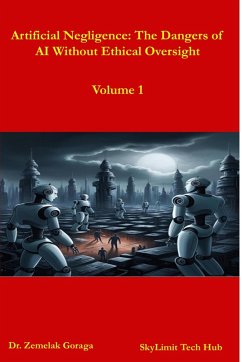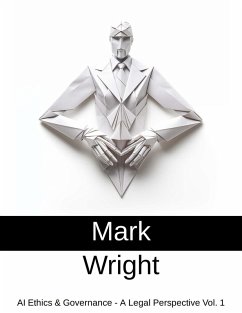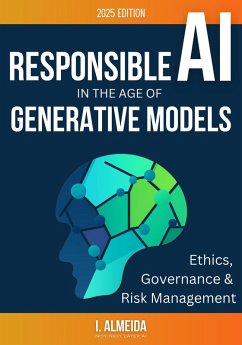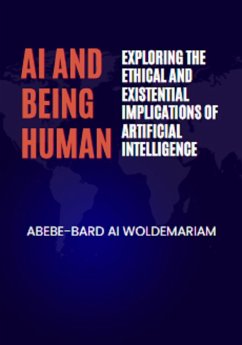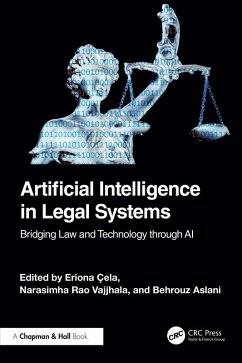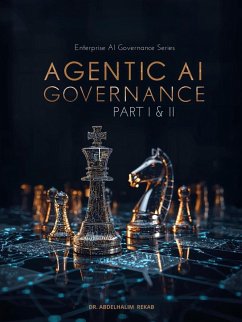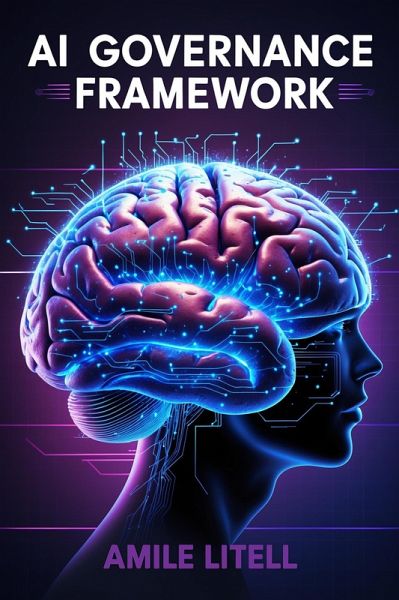
AI Governance Framework : Ethical Oversight in the Age of Artificial Intelligence (The Quantum Series) (eBook, ePUB)

PAYBACK Punkte
0 °P sammeln!
AI Governance Framework: Ethical Oversight in the Age of Artificial IntelligenceArtificial Intelligence is no longer a distant idea. It is here now, shaping daily life in schools, banks, hospitals, courts, and workplaces. AI makes decisions about hiring, housing, healthcare, and even public safety. These tools bring amazing benefits, but they also carry real risks. Who is responsible when an algorithm makes a mistake? Who is held accountable when bias harms a community? AI Governance Framework takes these questions head-on and offers a clear path forward.Why We Need Rules Now Too often, techno...
AI Governance Framework: Ethical Oversight in the Age of Artificial Intelligence
Artificial Intelligence is no longer a distant idea. It is here now, shaping daily life in schools, banks, hospitals, courts, and workplaces. AI makes decisions about hiring, housing, healthcare, and even public safety. These tools bring amazing benefits, but they also carry real risks. Who is responsible when an algorithm makes a mistake? Who is held accountable when bias harms a community? AI Governance Framework takes these questions head-on and offers a clear path forward.
Why We Need Rules Now Too often, technology races ahead while policy struggles to catch up. We saw this with the internet, with data privacy, and with cybersecurity. With AI, we cannot afford to wait. This book explains why oversight must lead technology, not chase it. Readers will see why strong frameworks are essential for trust, fairness, and safety.
What Governance Means AI governance is more than a buzzword. It is the set of values, rules, and structures that guide how AI is created and used. Inside this book you will discover the ethical pillars of AI: transparency, fairness, doing no harm, and keeping humans in control. You will also learn about risk management, auditing, accountability, and explainability. Each chapter shows how these ideas work in practice, giving readers the tools to ask the right questions and demand the right safeguards .
Global Models and Local Action AI is a global force, and every country is responding differently. The European Union centers its rules on human rights. The United States takes a sector-based approach, letting different agencies set their own standards. China ties AI to state control, while Canada focuses on trust and inclusion. By comparing these models, the book helps readers see both the strengths and gaps in worldwide oversight .
The Role of Business and Government Companies design and release most of today's AI systems, which makes corporate responsibility vital. This book shows how ethical companies are building teams to review AI tools, test for fairness, and share results openly. But it also explains where things can go wrong when profit moves faster than safety. At the same time, governments cannot sit back. They must create clear and fair rules, involve the public, and cooperate across borders. The balance between innovation and protection is at the heart of governance .
Why Data, Privacy, and Fairness Matter AI runs on data, but behind every dataset is a person. Privacy and consent are not optional. They are rights. This book explains how informed consent, data minimization, and transparency must guide every project. It also shows how bias enters systems and how fairness audits can stop harm before it spreads. Readers will see why diverse teams, public involvement, and clear laws are the keys to building trust .
Ethics Committees and Human Oversight Machines are powerful, but they are not wise. Ethics committees give voice to values, communities, and those most affected. Human oversight ensures that real people remain responsible for decisions about freedom, safety, and rights. These structures remind us that AI is a tool to serve society, not a ruler to control it.
A Practical Guide for Leaders This book is written for regulators, policymakers, public servants, and anyone who wants to understand how to lead in the age of AI. You do not need to be a programmer to read it. You need only a concern for fairness, a commitment to service, and the courage to lead with clarity.
Artificial Intelligence is no longer a distant idea. It is here now, shaping daily life in schools, banks, hospitals, courts, and workplaces. AI makes decisions about hiring, housing, healthcare, and even public safety. These tools bring amazing benefits, but they also carry real risks. Who is responsible when an algorithm makes a mistake? Who is held accountable when bias harms a community? AI Governance Framework takes these questions head-on and offers a clear path forward.
Why We Need Rules Now Too often, technology races ahead while policy struggles to catch up. We saw this with the internet, with data privacy, and with cybersecurity. With AI, we cannot afford to wait. This book explains why oversight must lead technology, not chase it. Readers will see why strong frameworks are essential for trust, fairness, and safety.
What Governance Means AI governance is more than a buzzword. It is the set of values, rules, and structures that guide how AI is created and used. Inside this book you will discover the ethical pillars of AI: transparency, fairness, doing no harm, and keeping humans in control. You will also learn about risk management, auditing, accountability, and explainability. Each chapter shows how these ideas work in practice, giving readers the tools to ask the right questions and demand the right safeguards .
Global Models and Local Action AI is a global force, and every country is responding differently. The European Union centers its rules on human rights. The United States takes a sector-based approach, letting different agencies set their own standards. China ties AI to state control, while Canada focuses on trust and inclusion. By comparing these models, the book helps readers see both the strengths and gaps in worldwide oversight .
The Role of Business and Government Companies design and release most of today's AI systems, which makes corporate responsibility vital. This book shows how ethical companies are building teams to review AI tools, test for fairness, and share results openly. But it also explains where things can go wrong when profit moves faster than safety. At the same time, governments cannot sit back. They must create clear and fair rules, involve the public, and cooperate across borders. The balance between innovation and protection is at the heart of governance .
Why Data, Privacy, and Fairness Matter AI runs on data, but behind every dataset is a person. Privacy and consent are not optional. They are rights. This book explains how informed consent, data minimization, and transparency must guide every project. It also shows how bias enters systems and how fairness audits can stop harm before it spreads. Readers will see why diverse teams, public involvement, and clear laws are the keys to building trust .
Ethics Committees and Human Oversight Machines are powerful, but they are not wise. Ethics committees give voice to values, communities, and those most affected. Human oversight ensures that real people remain responsible for decisions about freedom, safety, and rights. These structures remind us that AI is a tool to serve society, not a ruler to control it.
A Practical Guide for Leaders This book is written for regulators, policymakers, public servants, and anyone who wants to understand how to lead in the age of AI. You do not need to be a programmer to read it. You need only a concern for fairness, a commitment to service, and the courage to lead with clarity.
Dieser Download kann aus rechtlichen Gründen nur mit Rechnungsadresse in A, B, CY, CZ, D, DK, EW, E, FIN, F, GR, H, IRL, I, LT, L, LR, M, NL, PL, P, R, S, SLO, SK ausgeliefert werden.




